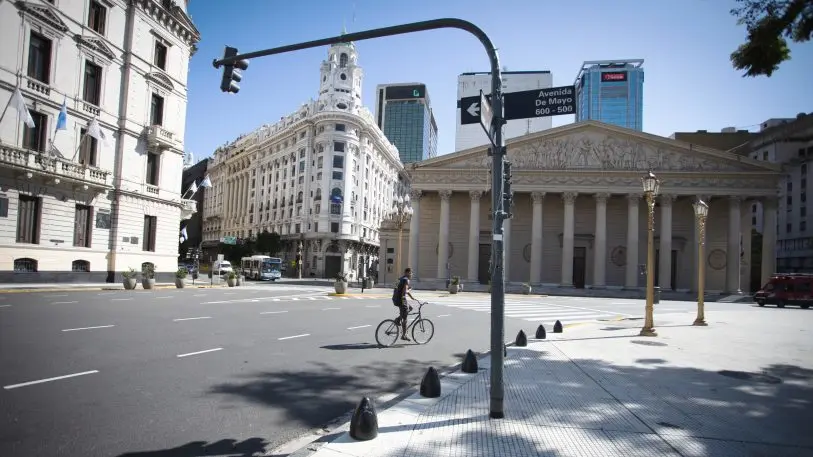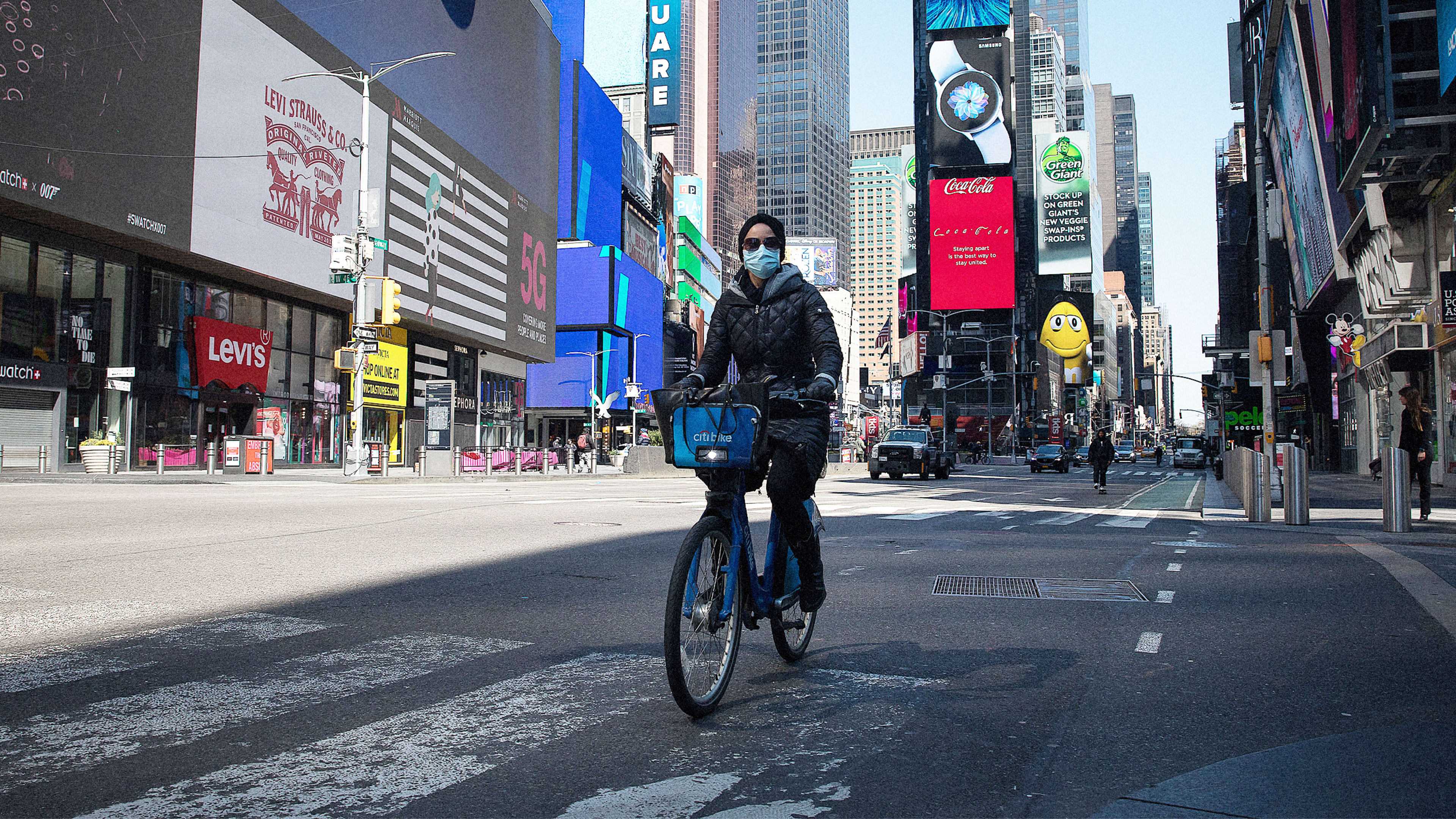As the coronavirus crisis has shut down some public transit service and taken so many cars off roads that the air has visibly cleared in cities such as Los Angeles, bikes have emerged as the right tool for a pandemic—a way to quickly get around cities and get exercise while staying a safe distance from everyone else.
In Mexico City and Bogota, bike-share systems have loaned bikes to healthcare workers and shut down some car lanes to give cyclists more space. Berlin’s bike-share program is temporarily offering free half-hour rides to everyone, and the city quickly added new bike lanes. In Philadelphia, bike traffic increased so steeply in some areas that the city temporarily closed a stretch of a major street to cars. The use of bike-share programs doubled in Chicago and surged in New York and London.
It’s possible that the current pandemic will lead to lasting changes in where we work or even how we socialize. Will it also lead to changes in urban transportation?
“We’re sort of seeing this ripple effect happen, where bicycles are being positioned as a sustainable, cost-effective, reliable mode of transportation at a time when there are relatively few other options for accomplishing some pretty essential tasks,” says Kyle Wagenschutz, director of local innovation at the nonprofit PeopleForBikes. “I guess the question is: Can it last?”
One factor may be the future of work—if more employers realize that allowing remote work is feasible for those with desk jobs, car traffic could steeply drop. More than 75% of Americans drive alone to work now. With less time stuck in traffic on commutes, it’s possible to imagine that more people would choose to run local errands on foot or by bike. The choice hinges on convenience, Wagenschutz says.

“We did some research last year to dive into what motivates Americans to make the transportation choices that they do—why would you choose to drive a car versus riding a bike, or to take public transit versus walking,” he says. “The number one predominant reason that people choose how they’re going to get around is largely driven by convenience and schedule.” During the pandemic, it’s more convenient to ride—people have less reason to drive if they don’t have to go to work, or the airport, or take their kids to soccer practice. While some version of normalcy will return, it might look different.
“I think we’d be naive to assume that we’re just going to all work right back into our normal daily routines,” he says. “I think that’s going to be disrupted. How do workplaces reshape, and opportunities for people to get to work? How do schools reshape how kids receive learning? How do social interactions change as a result of this? That could actually have a more profound effect on our transportation behaviors than we’re really thinking about today.”
It’s also possible that the experience of biking now may convert some people into regular riders. Some may have dusted off unused bikes for recreation—now that walking and biking are among the few ways that it’s okay to be outside—and may realize that they want to do more of it. Others who have essential jobs and normally rely on carpooling or public transportation to get to work have turned to bikes for social distancing, but they might realize that they prefer to get more exercise and avoid crowds over the longer term. (If this happens at a large scale, it could be to the detriment of subway systems that are already facing budget problems during the crisis.) As some cities add temporary bike lanes, and as car traffic shrinks, creating an accidental experiment in better bike infrastructure, the eventual result may be more support for permanently expanding bike networks.
Major shocks have led to changes in transportation in the past: Though not exactly analogous, the 1970s oil embargo helped lead the Netherlands to dramatically transform car-filled streets to pedestrian plazas and open space for biking. A few decades ago, Amsterdam looked more like the U.S.; now, around two-thirds of trips happen on bikes. Most American cities are already quickly adding new bike infrastructure—with some projects continuing despite the current crisis, and some cities working to figure out how to hold virtual public meetings to get input—and it’s conceivable that the growth in cycling in some cities during the crisis will help accelerate growth afterward.
Still, it’s too early to tell what will happen, Wagenschutz says. “We’re three or four weeks into this as the country,” he says. “I would say we have a lot more questions than we really have answers today. We’re sort of seeing what’s happening, but I’m not sure that anybody can hazard the long-term forecast yet. I think we’re still too deep at the moment to really sort of begin to emerge in a healthy way.”
Recognize your brand’s excellence by applying to this year’s Brands That Matter Awards before the early-rate deadline, May 3.
